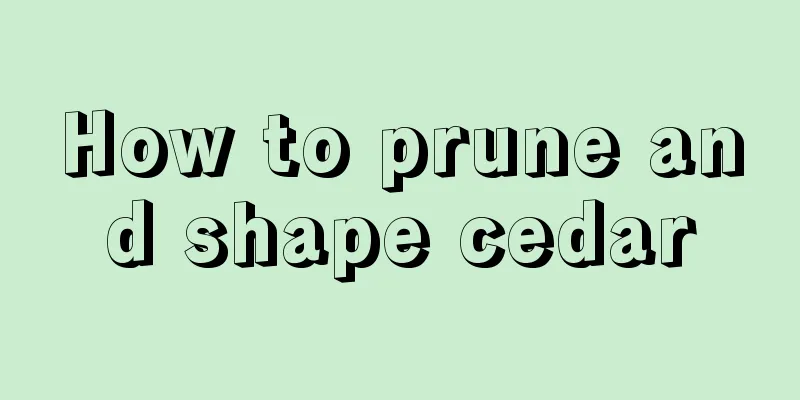How to prune and shape cedar

The bent trunk of cedar should be straightenedThe cedar is shaped by a low-branched central trunk. For seedlings with bent and weak tops, the tender shoots should be tied up with thin bamboo poles to make the trunks straight, while at the same time, the growth advantage of the top should be used to encourage them to grow higher. Binding work is carried out once a year. If competing branches are found on the main trunk of the cedar, select one as the central leading trunk and shorten the other one, and then remove the shortened branch the following year. Selection of large lateral branches of cedarBecause the cedar's side branches are arranged in irregular whorls, with large numbers and small spacing, the crown is lush and closed, resulting in uneven nutrient distribution. The growth of each side branch is often very uneven. Therefore, when pruning, it is required to arrange the side branches in layers on the main trunk. Each layer should retain about 4-6 side branches, with a distance of about 30-50 cm between layers. Attention should be paid to protecting new shoots, while removing dense branches, thin branches, and diseased and insect-infested branches. For thicker branches that do not serve as side branches, they should be pruned first and then nurtured for a period of time before being processed. Need to balance the cedar tree vigorIn order to form the graceful crown of the cedar, the side branches at the bottom are required to be long and gradually shorten upwards. In addition, the growth of side branches on the same layer needs to maintain a relative balance. Therefore, when shaping and pruning, attention should be paid to the relative balance of the growth of each side branch. For branches that grow too vigorously, they can be properly pruned back and replaced with weak parallel branches or drooping branches to balance the tree's vigor. Adjusting the "strong bottom and weak top" cedar treePrune back the strong branches, overlapping branches, parallel branches, etc. at the bottom, and spray the upper plants with appropriate amounts of growth hormones to promote branch growth. Pruning of cedar treesFor eccentric trees, you can use the method of pulling in branches to fill the gaps, using ropes or wires to pull nearby larger branches over to fill the gaps; or you can use the grafting method, using the belly grafting method to graft strong and full buds onto plants with large gaps and no branches, to promote the sprouting of new branches. |
>>: How to repot bamboo cypress
Recommend
How to make purslane bonsai
1. Choose a flower pot When making purslane into ...
How long does it take for osmanthus cuttings to take root?
Rooting time of osmanthus cuttings It is recommen...
What fertilizer to use for fragrant wood
1. No fertilizer is required during the seedling ...
The meaning of jade leaves
1. Branch out The leaves represent vitality and s...
Things to note when planting oleander
Oleander is a common ornamental plant with bright...
What are the cultivation methods and precautions of Golden Heart Chlorophytum
How to grow golden heart spider plant Golden Hear...
How to care for potted tree roses? How to cultivate potted roses
How to cultivate tree roses in pots 1. Light: Whe...
Hibiscus cutting method and time
1. Time The suitable time for cuttings is spring,...
Can banana trees be planted in Hunan?
Can banana trees be grown in Hunan? Banana trees ...
What to do if the ball pine turns yellow and soft
The reasons for similar phenomena First, it may b...
Can yellow horn orchid be propagated by cuttings? Cutting method diagram
The yellow horn orchid has a fresh fragrance and ...
Which month should strawberries be planted?
Strawberry is a very common fruit. Its fruit is b...
When should autumn coriander be planted in Northeast China?
Coriander, also known as cilantro, is a vegetable...
Why does the goldfish plant lose its leaves and how to remedy it
1. Reasons for leaf drop 1. The light is too stro...
How to plant coriander and make it germinate easily
1. Seed treatment If you want coriander to germin...









